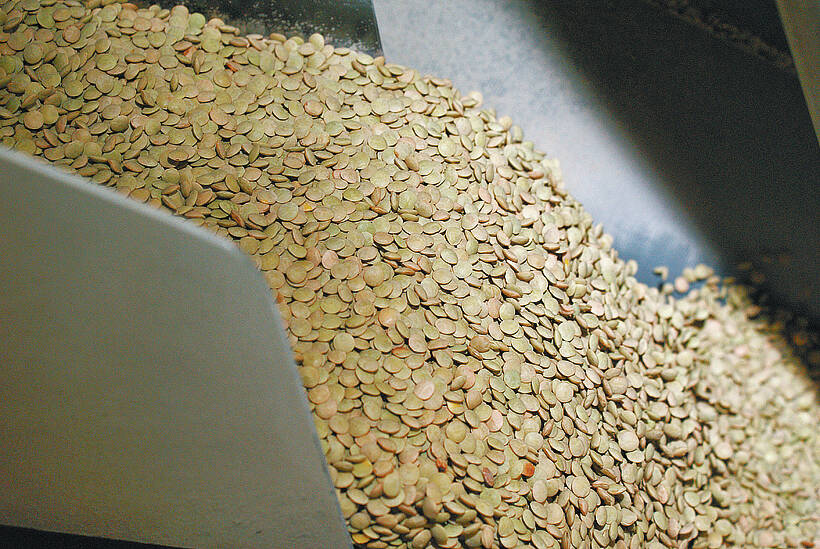Cattle price drop likely
Fed cattle prices were steady last week, but Canfax said there are indications packers are backing off.
The steer average was virtually unchanged but the heifer average was 50 cents per hundredweight lower, due mainly to quality problems.
The strong basis meant few cattle moved south for slaughter.
Prices Feb. 4 were steers $86.25-$90.85 per cwt., flat rail $150.50-$153.65 and heifers $86.50-$89.85.
Beef wholesale prices are steady.
Carcass weights are down. Last week’s steer weight was 795 lb. nationally and 786 lb. for Alberta. This compares to 805 lb. for Canada and 815 lb. for Alberta in the same week last year.
Read Also

Green lentil market oversupplied
Farmers in Western Canada can expect price pressure on their new crop of green lentils, as the available supplies among the world’s major lentil-growing nations increase significantly.
Prairie fed cattle supplies are expected to remain tight into March resulting in active local packer competition and prices strengthening by about $1 per cwt.
Slaughter cow prices are about $5 per cwt. higher than a year ago.
D1,2 cows last week were $50-$57, with sales on good grain-fed types to $63.75.
Feeder cattle prices were under pressure last week with lightweight calf prices falling the most. The 300-400 lb. steers were down $4-$5 per cwt. on average.
Feedlots are still filling empty pens, but several reached capacity in the past month.
Canfax said the price pressure will continue as supplies increase through February and March.
Supporting factors are the solid United States market and good fed cattle prices.
Bred cows and heifers were well quoted this week and demand was strong for the good types on offer. Prices were steady.
Bred cows were priced from $550-$1,280. Bred heifers were quoted from $850-$1,225. Lighter trade was reported for cow-calf pairs, with price spreads from $900-$1,130.
Hog prices fall
Canadian hog cash prices fell last week, partly due to the rising dollar.
But futures prices showed strength at week’s end on news that the U.S. was making additional pork purchases to include in the Russian aid package.
The number of hogs slaughtered in the United States was 1.91 million last week, down from January’s pace. If this continues it should help strengthen cash prices.
The number of sows being slaughtered is running about 20 percent ahead of this time last year. Number of gilts sent to packers is also up.
Glen Grimes, an agricultural economist at the University of Missouri, said if the trend continues, the U.S. breeding herd on March 1 will be down at least eight percent from same time last year.














